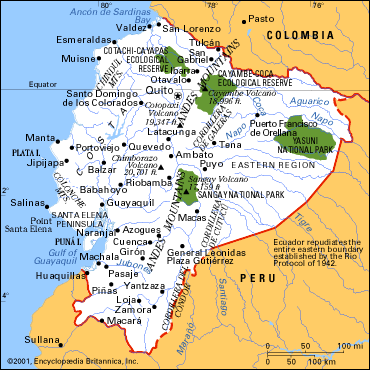Quito Somehow with 2 million people spread across this particular landscape, the poor are less visible than in many other Latin American cities.
Quito is spread out along the narrow valley between impressive mountains soaring somehow more than 9000 feet above seat level. Despite the fact that we are on the equator and the quick and hard sun that comes with it, the temperature is cooler because of the altitude and stays much the same, they tell me, throughout the year, changing only from dry to wet with summer to fall. The Social Security Administration of the government owns the Hotel Quito where I have been staying as their guest. From the hotel’s 7th floor in the morning before the rain and fog of the afternoon descends, the mountains seem on one side to rise up from the valley on almost a 45 degree angle into the sky and clouds. On the other side the vista sweeps into a deep valley and across a plain to more mountains as far as my eyes can see.
The poor are everywhere of course but hidden by these mountains mainly in the older parts of the central city in apartments and conventillos (the same word used in our Boca neighborhood in Buenos Aries reflecting tenement style housing made of found assembled materials), but mainly they are spread out in what are called here communitas periphicos — peripheral communities at the edge of Quito’s sprawl in the southern and northern boundaries of the city. This is not a city of mega-slums like San Juan Lurigancho in Lima or La Matanza outside of Buenos Aires. The city is smaller certainly, but the communities are also smaller and more dispersed, though it is unclear if that is an advantage to the poor families.
The problem as always it seems is work and transportation. There is little transportation that is easily affordable, and the distances are significant to come from the periphery to the jobs in the city. Furthermore with the subcontracting problem and the minimal guarantees of wages for labor (about $1 per hour — which is not much even here where the economy was “dollarized” within the last 10 years bringing governments down with it), jobs are not easy to find and are highly informal. And, of course time is also not money, but it takes hours to commute from the periphery each way from the center of town or other places where jobs might be found.
There is much to learn about this great city before we could be sure of the organizing plan in the challenge of people disbursed so widely throughout this amazing geography. Something to look forward to studying more in the future and to hearing more carefully the advice from our new comapneros and campaneras in Ecuador.
